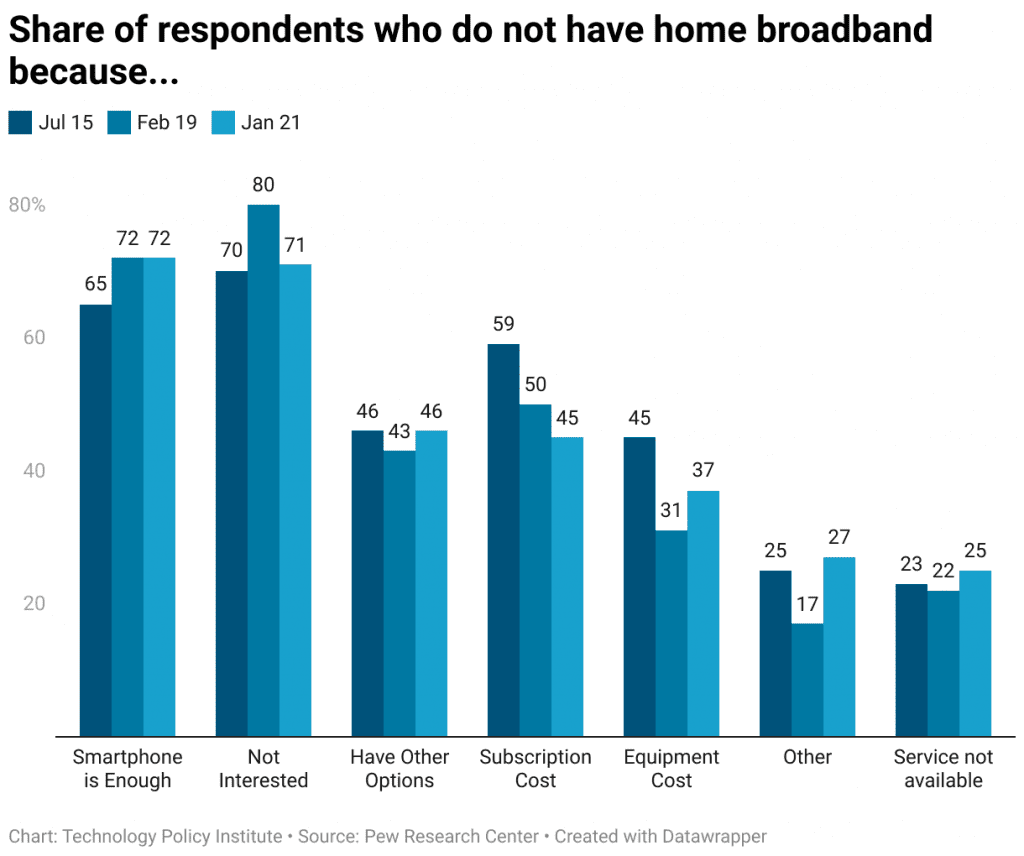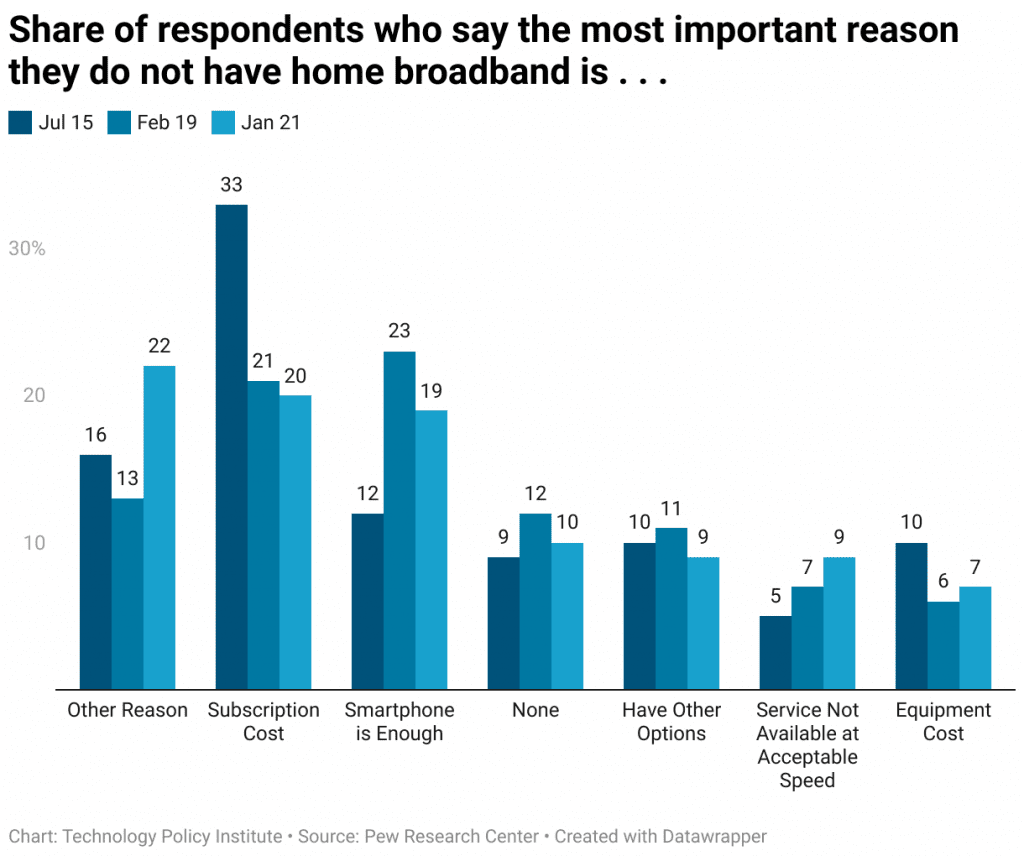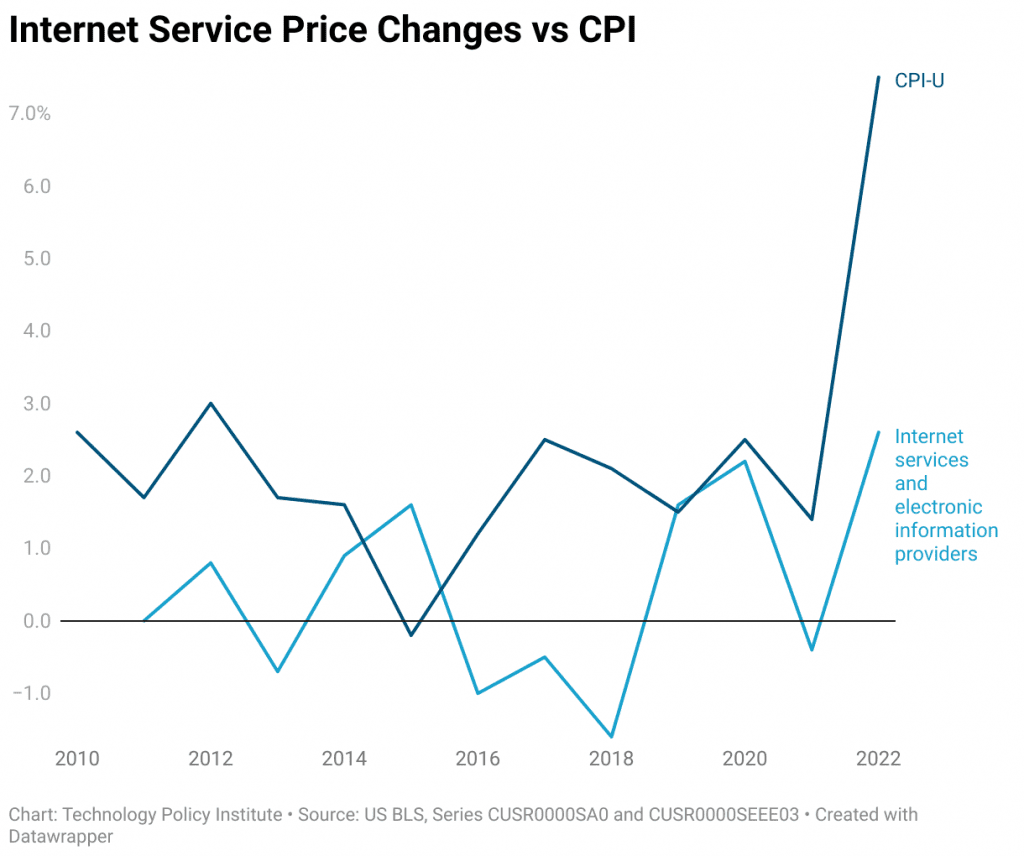Commenting on the digital divide earlier this month, Vice President Harris said that “one of the most common reasons [is c]ost, the expense of [broadband].” She then praised the Affordable Connectivity Program (ACP), part of the recently enacted Bipartisan Infrastructure Law, for making so many Americans “eligible to receive a monthly discount on their monthly bill.”
In fact, the ACP does more than that. Given the widespread availability of low-income plans and the $30 per month ($75 on tribal lands) plus $9.25 per month from Lifeline, it makes broadband access free for nearly everyone who is eligible.
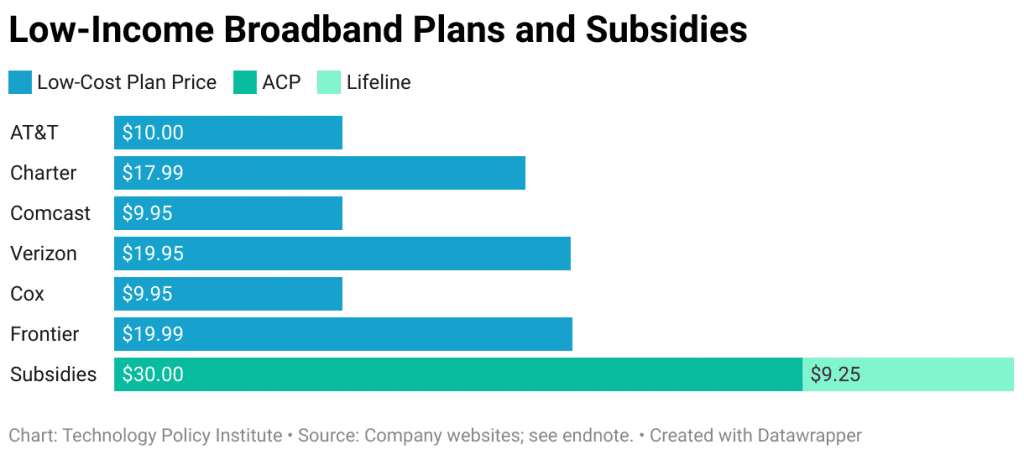
The Administration and the FCC should feel proud of this accomplishment. Still, surveys, price data, and real-world behavior suggested that cost has, over the years, become a smaller contributor to the digital divide. We should figure out the other reasons keeping people from accessing the internet.
Ongoing surveys by the Pew Research Center show the share of unconnected people reporting cost as a reason decreasing steadily over the years. Figure 2 shows that the two reasons most commonly reported for not having a home broadband connection are that a “smartphone lets you do everything online that you need to do” and that the respondent is not interested. Even ten months into the pandemic, 71% of non-subscribers reported no interest. Importantly, the share of respondents who report cost as a barrier has been decreasing steadily, from 59% in 2015 to 45% in 2021.
Even the share of respondents reporting cost as the most important reason for not subscribing has plummeted, from 33% in 2015 to 20% in 2021, just about tied with smartphone being a sufficient substitute (Figure 3). The Pew survey unfortunately did not include “not interested” as a possible response to the question of the most important reason, so we do not know where it would have ranked in the “most important” list.
These results are consistent with other information on real prices of broadband subscriptions.
The price of broadband service as measured by the Bureau of Labor Statistics has been trending well below overall inflation, causing broadband to become relatively less expensive than other goods and services.
Price data collected by the FCC shows similar trends, with relative prices falling across tiers, as Figure 5 shows.
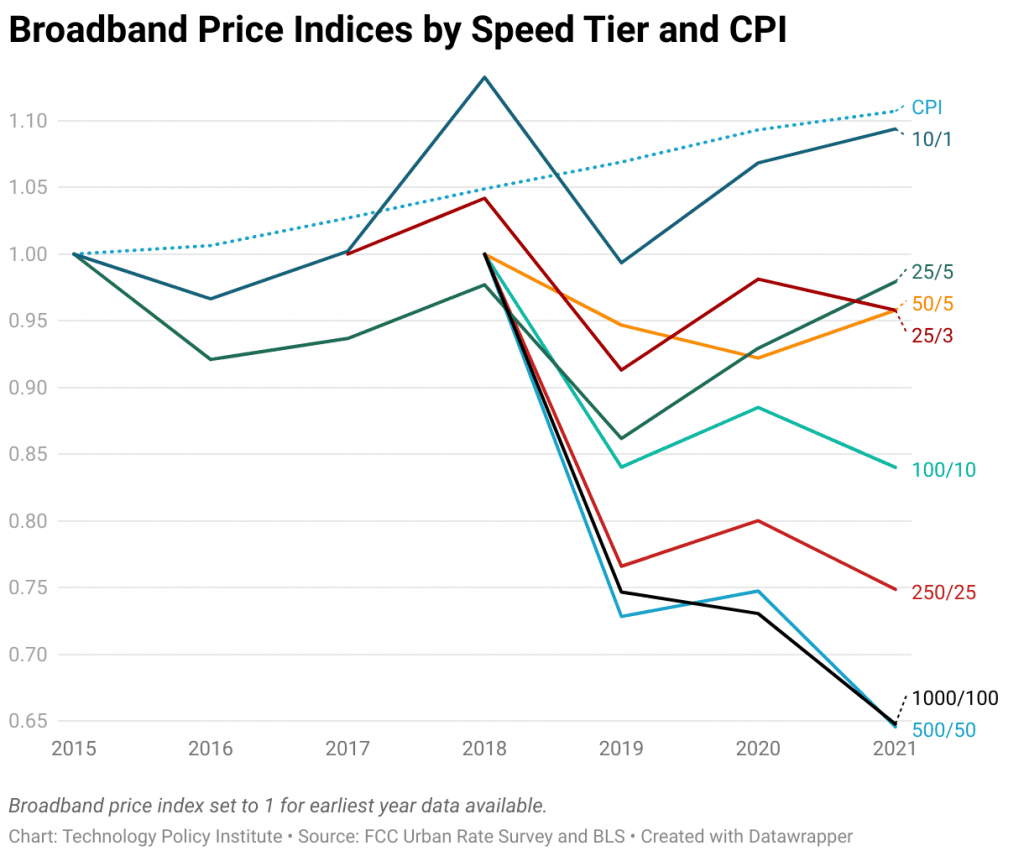
Real-world behavior also demonstrates that price is generally not the primary obstacle to getting low-income people online. Pilot programs run by the FCC as well as experience with private programs designed for low-income people show that even at a price of zero, many people do not subscribe.
Given the evidence of the importance of non-cost factors responsible for the digital divide and the ACP taking affordability off the table as a cause, our focus needs to pivot away from affordability to studying other key underlying causes of the digital divide. Only by studying this question can we claim to be truly trying to close the divide.
Solving the income-based digital divide requires us to go deeper and study questions that have been largely ignored, all stemming from the basic question of why, when broadband is free, do so many people still not subscribe?
The Infrastructure Investment and Jobs Act (IIJA) includes $2.75 billion for “digital equity and inclusion” projects. These funds provide a unique opportunity to study this question in depth and to use those results to power the final sprint to connect low-income households. NTIA could work with states, experts, ISPs, and others to design thoughtful experiments and trials across the country to answer the many specific questions whose answers together will help close the divide, such as:
- How effective are different types of digital literacy training? What types of programs are useful for what kinds of people?
- How much do low-income people value mobility relative to a fixed connection? If low-income people move homes more frequently than wealthier people, does that reduce their demand for a home connection?
- What do people really mean when they say they are “not interested” in subscribing? Are these the people who do not subscribe even when the price is zero?
It is tempting to continue focusing on affordability, given that it seems to have easy solutions. But affordability has become steadily less important, and the ACP almost completely takes it off the table. The remaining questions are more difficult, without obvious answers or easy solutions. For possibly the first time, we have real resources to rigorously study the problem and find answers. Let’s not miss this opportunity.
Scott Wallsten is President and Senior Fellow at the Technology Policy Institute and also a senior fellow at the Georgetown Center for Business and Public Policy. He is an economist with expertise in industrial organization and public policy, and his research focuses on competition, regulation, telecommunications, the economics of digitization, and technology policy. He was the economics director for the FCC's National Broadband Plan and has been a lecturer in Stanford University’s public policy program, director of communications policy studies and senior fellow at the Progress & Freedom Foundation, a senior fellow at the AEI – Brookings Joint Center for Regulatory Studies and a resident scholar at the American Enterprise Institute, an economist at The World Bank, a scholar at the Stanford Institute for Economic Policy Research, and a staff economist at the U.S. President’s Council of Economic Advisers. He holds a PhD in economics from Stanford University.

